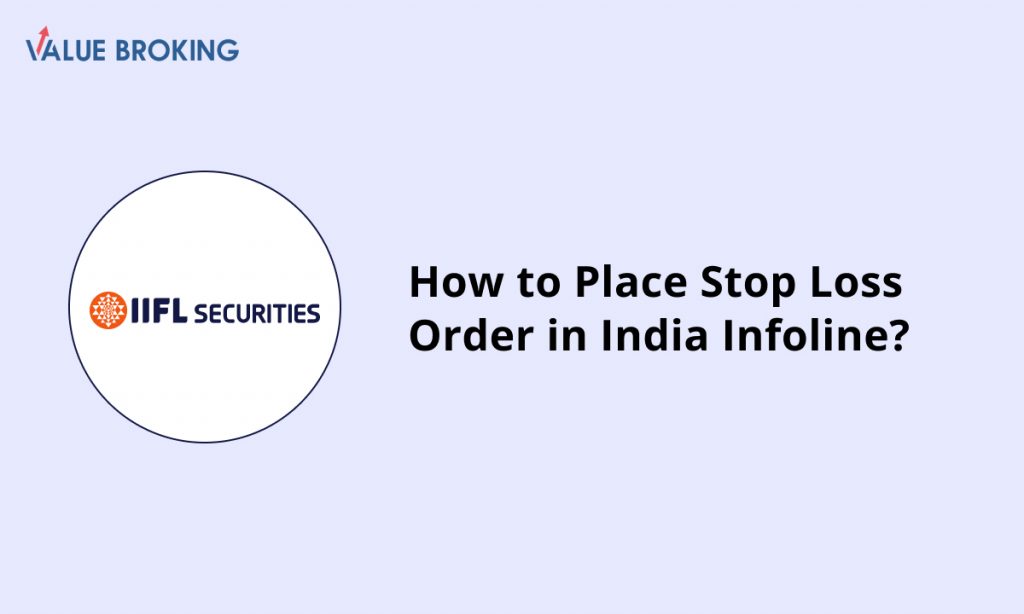How to Place Stop Loss Order in India Infoline?

A stop-loss order is an important risk management tool used by traders to limit their potential losses on a trade. When placing a stop-loss order on India Infoline, you can protect your investments by setting a predetermined price level at which you want to exit a trade if the market moves against you.
Steps to Place a Stop Loss Order
Overall, follow these steps to place a stop-loss order on India Infoline:
Step 1: Determine whether you’re placing a buy or sell order.
Step 2: Establish the stop-loss price based on technical support levels or your acceptable loss threshold.
Step 3: Decide between an SL or SL-M order based on your discretion.
Assessing Stop Loss Levels
Before placing a stop-loss order, it’s essential to determine the appropriate level at which to set it. For instance, if you’ve bought 1000 shares of a stock at Rs.145 and the technical chart suggests a strong support at Rs.135, you might consider setting your stop loss just below Rs.135. However, you also need to consider your risk tolerance. If you’re unwilling to lose more than Rs.6,000 in the trade, you may choose to set your stop loss at Rs.139, prioritizing affordability over technical levels.
Placing a Stop Loss Order
A stop-loss order is essentially an order placed in the opposite direction of your original trade. If you’re initiating a buy order, your stop-loss order should be a sell order. Conversely, if you’re initiating a sell order, your stop-loss order should be a buy order.
Market Stop Loss vs. Limit Stop Loss
Next, you must decide between a market stop-loss order (SL-M) and a limit stop-loss order (SL). Let’s delve into the details of each:
Market Stop Loss (SL-M) Order:
If you’ve bought a stock at Rs.250 but don’t want to hold it if it falls below Rs.244, you can select and place a “Sell SL-M order” with a trigger price of Rs.244. Once the stock reaches Rs.244, the SL-M order will be sent to the exchange, and your position will be squared off at the market price.
Limit Stop Loss (SL) Order:
With an SL order, you’ll specify both a selling price (in this case, Rs.244) and a trigger price (Rs.243). When the sell price of Rs.244 is reached, the sell limit order is sent to the exchange. The square-off instruction will never be lower than Rs.243, ensuring you limit your risk.
Conclusion
A stop-loss order is an essential tool for any trader, providing a level of protection and insurance in any trade. Understanding the process of placing stop-loss orders on India Infoline is crucial to safeguard your investments effectively. Remember, NRIs can also engage in equity trading without intraday trading privileges. They should seek approval through their designated bank, acting as the authorized dealer for NRIs. Overall, the trading process remains largely the same for both NRIs and resident Indians. You can navigate the market with confidence and prudence by mastering the art of placing stop-loss orders.